NORFOLK, Va. (Jan. 8, 2010) -- The U.S. Army Corps of Engineers Lynnhaven Oyster Restoration project team has been chosen to receive the 2009 Coastal America Partnership Award for its innovative and successful ongoing efforts to restore and protect the native American oyster population in the Lynnhaven River.
David Schulte, a marine biologist with the Corps of Engineers Norfolk District, will accept the award on behalf of 39 other team members. Schulte, who is a doctoral student at the College of William and Mary Virginia Institute of Marine Science, has been involved in the restoration project since the Corps initiated the planning effort in 2004.
Virginia Tippie, director of Coastal America, and Assistant Secretary of the Army for Project Planning and Review Doug Lamont will present the plaques and congratulatory letters from President Barack Obama to representatives of each member of the team. This is the only environmental award of its kind given by the White House. Coastal America is a partnership of federal agencies, state and local governments, and private organizations whose mission is to protect, preserve and restore the nation's coasts.
The Corps' partners in the project are the Virginia Institute of Marine Science, Lynnhaven River Now and the City of Virginia Beach, with endorsement of the Commonwealth of Virginia.
The Norfolk District has been involved with native oyster restoration in the Chesapeake Bay since 1999. The first projects, in the lower Rappahannock River and the Tangier Sound, were designed to augment the commercial oyster fishery, but had limited success. The team changed to a strategy geared instead toward ecological restoration, to develop self-sustaining oyster populations on restored reefs.
High-relief reefs were built to better mimic historical oyster-reef structure in the hope that they would perform better than earlier designs which simply scattered a thin layer of shell. The team also decided to focus on a tributary-by-tributary fashion, starting with small, tidally retentive systems most likely to provide oyster recruits for restored reef habitat.
This new strategy was implemented in the Great Wicomico River in 2004.
"The restored reefs are now performing better than we could have hoped," said Schulte.
The team's findings, published recently in the journal Science, show a 57-fold increase in the Great Wicomico oyster population. It is currently the largest restored oyster reef network in the world. Adult oyster densities average about 700 per square meter of reef, with about 300 young-of-the-year oysters, called "spat," adding up to about 1,000 oysters per square meter of high-relief reefs. These densities have never before been recorded in the Chesapeake Bay. What is more remarkable, added Schulte, is that these oysters are all from wild recruitment, not planted "spat-on-shell."
"This is the first time the Chesapeake Bay program goal of a 10-fold increase in native oysters has been met in any location, and we exceeded it by almost six times," said Col. Andrew Backus, commander of the U.S. Army Corps of Engineers, Norfolk District, which manages the project for the federal government.
Applying the lessons learned from the Great Wicomico River Oyster Restoration project, the Norfolk Corps proposed the next restoration reef network to be built in the Lynnhaven River in 2004. This time, the Corps had more partners willing to help. The collaboration included the Virginia Institute of Marine Science, Lynnhaven River Now, and the City of Virginia Beach, with endorsement of the Commonwealth of Virginia.
"I have seen first-hand the positive ecological impact this project has had. We hope to increase the existing 50 to 60 acres of reefs to 100 acres and do additional plantings of spat-on-shell baby oysters on some of the restored reefs," he added. According to Schulte, thousands of oysters the Corps protected with aquaculture netting as part of an anti-predator experiment are also thriving at several sites in the river. Early monitoring is showing some of the restored reefs are on a track similar to the older Great Wicomico high-relief reefs.
Coastal America's Partnership Award recognizes the collaborative, multi-agency effort that was needed to leverage and combine enough resources to successfully restore, preserve and protect Lynnhaven River's population of Native American oysters.
Project Facts
Aca,!Ac The Chesapeake Bay watershed is abot 64,000 square miles. The Lynnhaven basin, at about 64 square miles, in many ways is a microcosm of the Chesapeake Bay. The watershed is heavily urbanized, with much of the original forested areas now developed, and a sizable portion of the wetlands once lining the river now lost. In the 1890s, James Baylor surveyed all of Virginia's oyster grounds and delineated 986 acres of public oyster grounds in the Lynnhaven River.
Aca,!Ac By the mid-1970s the natural oyster reefs in the Lynnhaven River were essentially gone except for a few scattered patches, less than one acre in size.
Aca,!Ac All of the Lynnhaven River's waters were closed to shellfish harvest of any sort due to high bacteria levels in the water. The Corps considered this a good candidate site, however, based on the history of high oyster recruitment in the river, its once-extensive oyster beds, and the remnant oyster population, which was found at very high densities, and their large size. It was estimated that there were from 10-20 million oysters, scattered mostly on rip-rap and along marsh edges, throughout the Lynnhaven River system before the corps reefs. The large size of some of the adults observed (5-7 inches in length), indicate the wild Lynnhaven oyster has significant resistance to the diseases MSX and Dermo, which typically kill native oysters when they are 1-2.5 inches in length.
Aca,!Ac The Corps first proposed the Lynnhaven River as a potential restoration site in 2003, and the planning effort began in 2004. Several small reefs had been built in the river earlier, but did not succeed. Oceanographers and a hydrodynamic model determined that the design of the prior reefs caused them to trap excessive amounts of sediments, and their locations are not ideal for receiving or providing oyster larvae.
Aca,!Ac A combination of modern-day computer modeling as well as historic information was consulted to place the reefs in better locations. The Corps used the hydrodynamic model and historical information that had been lost for many years.
Aca,!Ac The reefs were built in two stages in 2007 and 2008. The city of Virginia Beach provided funding for spat-on-shell, where wild Lynnhaven strain oysters are bred in a hatchery and the resultant larvae are set on shells in the hatchery, then planted on several Corps-built reefs identified as "source reefs." Once mature oysters are on these reefs, they will provide oyster larvae to most areas throughout the Lynnhaven River system. This spat on shell has amounted to over 5,000 bushels of baby oysters, numbering over 10 million planted oysters on the Corps "source" reefs.
Aca,!Ac Between 60 million and 90 million oysters now live on Corps reefs. Many of these have survived the diseases and have grown to large size, especially the City of Virginia Beach spat on shell, some of which are up to 6" long now. The Corps hopes to continue planting more spat on shell to further increase the success of the project by increasing oyster recruitment throughout the river and to construct more reefs - to build about 40 more acres of reefs in the next few years, and to exceed 200 million oysters in the Lynnhaven River.
Related Links:
USACE decision sets focus for Chesapeake Bay oyster restoration
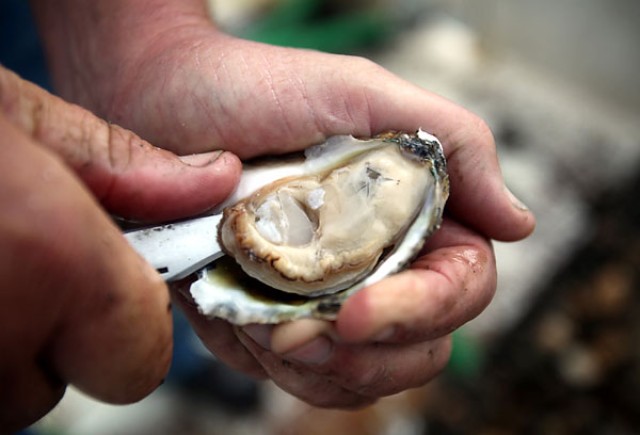
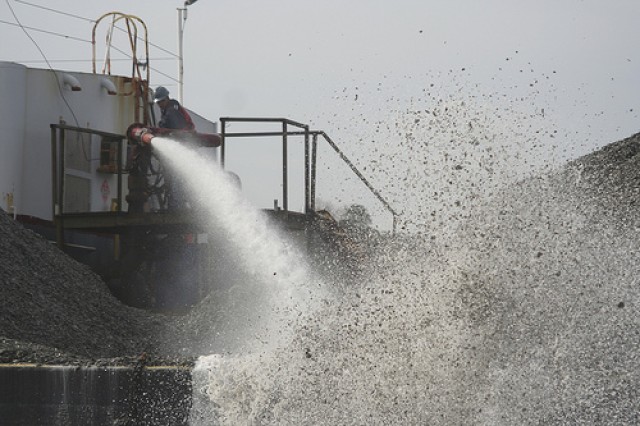
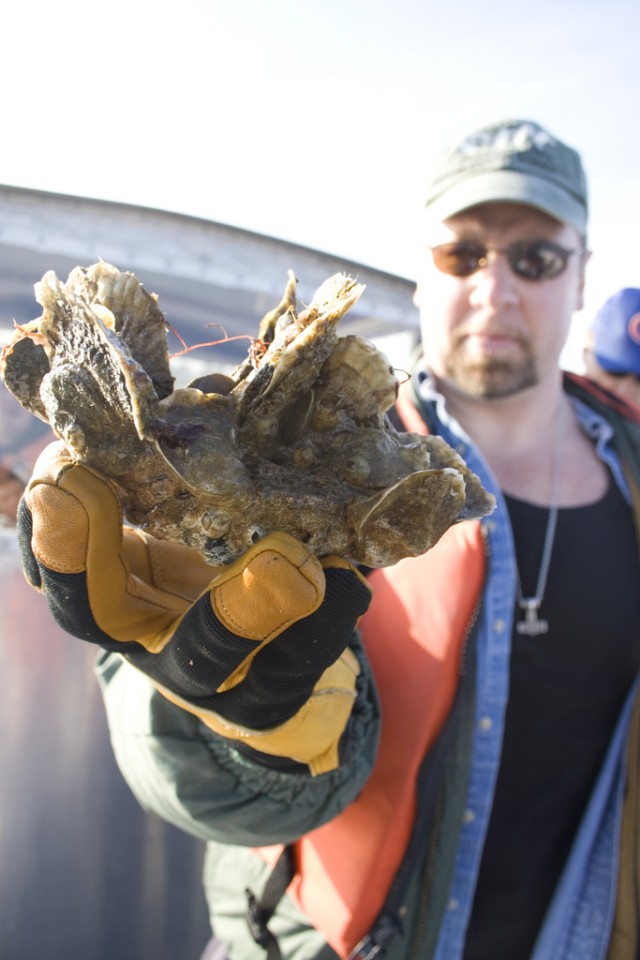
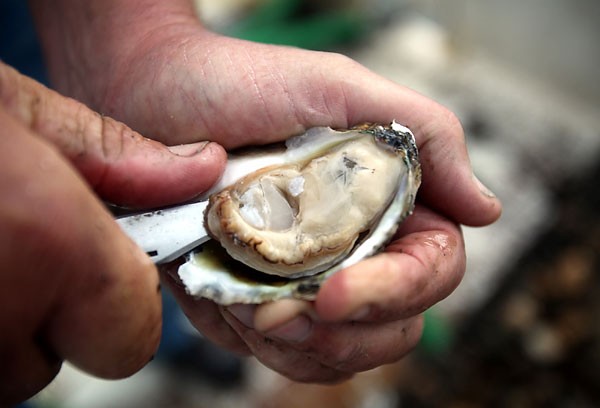
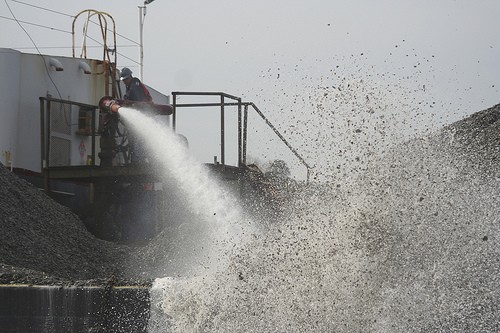
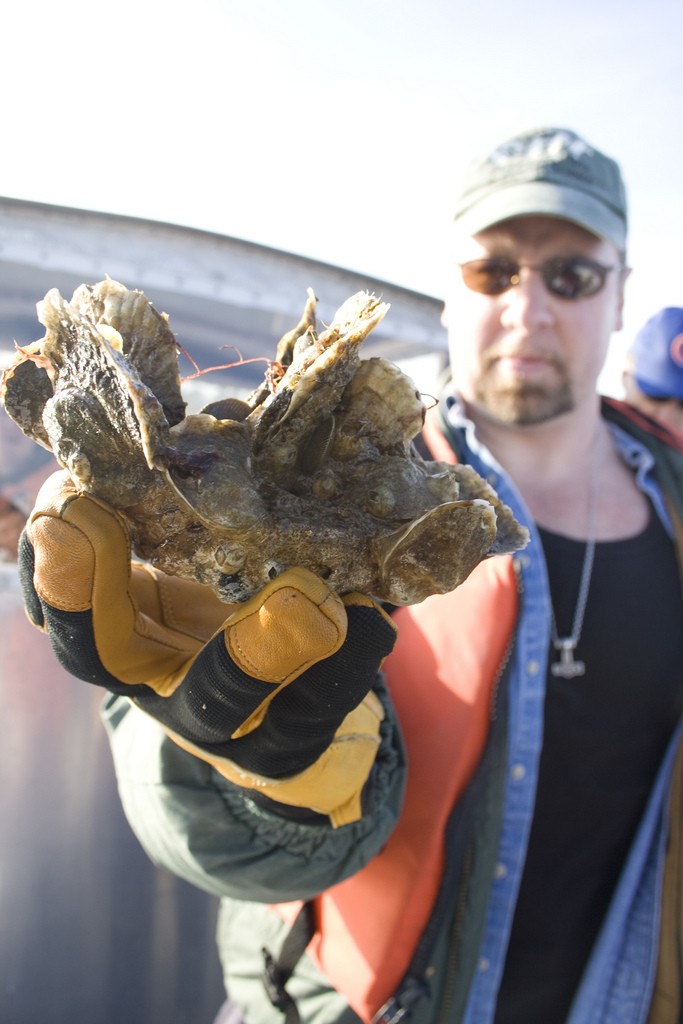
Social Sharing